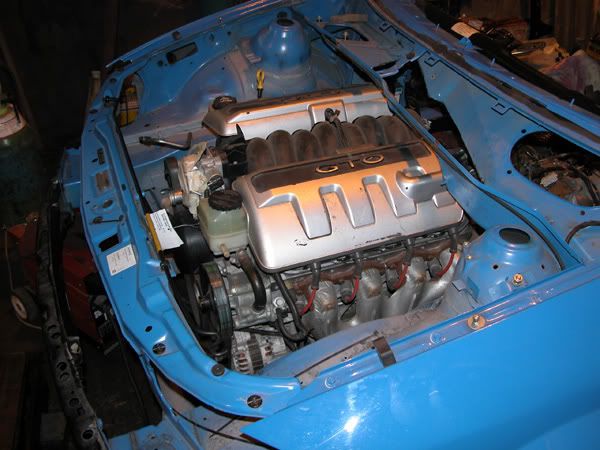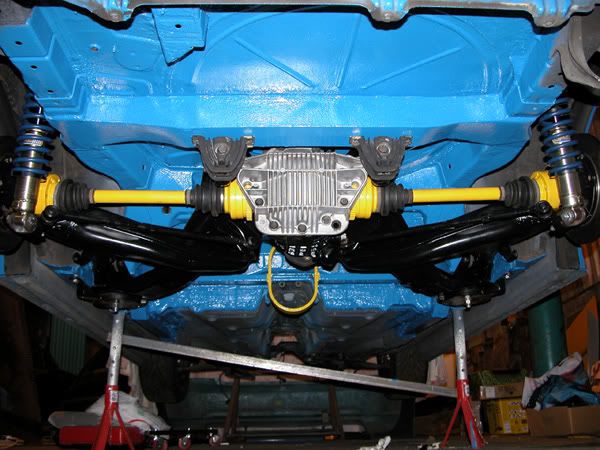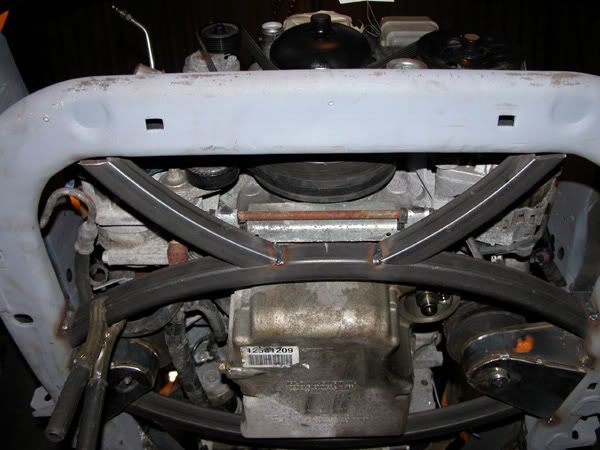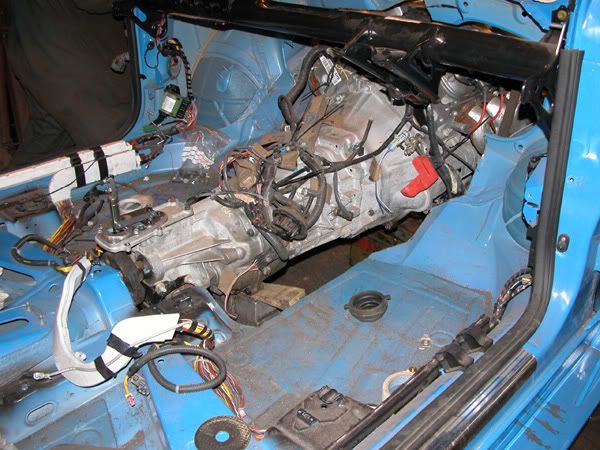Help please ............ Steering Question
Discussion
Not easily, no. The arc through which the track rods rotate needs to conform to the arcs of the suspension control arms, otherwise you get bump steer.
As far as I can see, if you have one track rod longer than the other, you are going to get some degree of bump steer on at least one side of the car, with most common suspension geometries.
As far as I can see, if you have one track rod longer than the other, you are going to get some degree of bump steer on at least one side of the car, with most common suspension geometries.
I`ll have the suspension all firmly fixed, so it can only pivot about the axis it's meant to, so all the steering rack will be doing is causing it to rotate about that fixed centre.
I always thought, it's the geometry (camber, castor and toe) that affect the handling, not the push/pull of the rack.
I just want to be 100% sure before I proceed
I always thought, it's the geometry (camber, castor and toe) that affect the handling, not the push/pull of the rack.
I just want to be 100% sure before I proceed

I bought a cheap copy of TurboCAD to try and model this sort of thing in 3D but either it or I am not capable. Probably the latter  Are there any share/free/cheap programs that would help with modeling suspension geometries to see what happens when they articulate.
Are there any share/free/cheap programs that would help with modeling suspension geometries to see what happens when they articulate.
What is of particular interest and relevance to this thread is being able to do "what ifs" like... What happens if the trackrod lengths are 20mm different? You could measure how much the steering angles change with bump and know for sure if it was going to be a significant problem or just a minor imperfection.
Leo
 Are there any share/free/cheap programs that would help with modeling suspension geometries to see what happens when they articulate.
Are there any share/free/cheap programs that would help with modeling suspension geometries to see what happens when they articulate. What is of particular interest and relevance to this thread is being able to do "what ifs" like... What happens if the trackrod lengths are 20mm different? You could measure how much the steering angles change with bump and know for sure if it was going to be a significant problem or just a minor imperfection.
Leo
Peter123 said:
I`ll have the suspension all firmly fixed, so it can only pivot about the axis it's meant to, so all the steering rack will be doing is causing it to rotate about that fixed centre.
I always thought, it's the geometry (camber, castor and toe) that affect the handling, not the push/pull of the rack.
I just want to be 100% sure before I proceed
I always thought, it's the geometry (camber, castor and toe) that affect the handling, not the push/pull of the rack.
I just want to be 100% sure before I proceed

If I understand you correctly when you say you will have the suspension fixed, does that mean no movement up or down ie no suspension travel?
Bumpsteer is important, if you do not know what you are really doing then you want zero bump steer. (Bump steer explanation..... as the wheel moves through its travel, up and down, the tracking changes, ie the wheel steers) Bump steer is caused by the suspension wishbones and steering arms being on different arcs. So having trackrods (steering arms) of different lengths will give a high likely hood of having different bump steer charecteristics on each side of the car. If you had different length wishbones on each side of the car (oval use) then it could be OK.
Sorry I do not know of any free programs.
When I modelled my bumpsteer I made a scale model of my suspension and steering in stiff card on a board with drawing pins. It was easy to move up and down and visualise. Often the traditional touch feel methods are ignored as low tech but give a better feel to whats going on. If you make your model 2 x actual size you will get more accuracy.
However bumpsteer is actually a 3D geometric problem and computers do help here, but in reality we get it close in a model and then adjust on the vehicle.
John
I`ve just read this ........ www.racerpartswholesale.com/longtech3.htm
No mention of steering rack, just upper and lower tie rods and ball joints, so hopefully my setup will be ok.
No mention of steering rack, just upper and lower tie rods and ball joints, so hopefully my setup will be ok.
Peter123 said:
I`ll have the suspension all firmly fixed, so it can only pivot about the axis it's meant to, so all the steering rack will be doing is causing it to rotate about that fixed centre.
I always thought, it's the geometry (camber, castor and toe) that affect the handling, not the push/pull of the rack.
I just want to be 100% sure before I proceed
I always thought, it's the geometry (camber, castor and toe) that affect the handling, not the push/pull of the rack.
I just want to be 100% sure before I proceed

No, you misunderstand me, I think.
The steering rack is bolted to the chassis and effectively does not move in relation to the chassis. The wheels (and hubs) move up and down relative to the chassis, through arcs dictated by the suspension links. Since the track rods link the two together, they have to be articulated, too. They rotate around a ball joint (usually) at the steering rack end and, of course, have small ball joints (track rod ends)at the outer ends.
If the arc the track rod moves through conflicts with the arcs dictated by the suspension links, the result is toe movement at the hub. This is what is meant by the term 'bump steer'.
Different track rod lengths means different arcs. Assuming the suspension links are the same on both sides, it stands to reason that one of the arcs the track rods are moving through must be wrong, even if the other side is correct, hence you will get some degree of bump steer on one side of the car.
Have a look at any book on suspension geometry or do a google for 'bump steer' and you should come across diagrams that explain it better than I can in words on here.
Peter123 said:
I`ve just read this ........ www.racerpartswholesale.com/longtech3.htm
No mention of steering rack, just upper and lower tie rods and ball joints, so hopefully my setup will be ok.
No mention of steering rack, just upper and lower tie rods and ball joints, so hopefully my setup will be ok.
the link said:
The undesirable steering is caused by bumps in the track interacting with improper length or angle of your suspension and steering linkages.
The following description is a little badly worded... in this context the term 'tie rod' means track rod. You can, of course, have bump steer at the rear of a car, as well, if there is a fixed tie rod that has an arc which conflicts with the arcs of the other suspension links.
I can guarantee that your setup won't be OK, though whether it is bad enough to suffer easily detectable bump steer will depend on the exact geometry...a 20mm difference in length might not cause a huge problem, but it will certainly introduce some conflict.
Edited by Sam_68 on Wednesday 25th October 20:27
Don't forget that you won't necessarily avoid bumpsteer just by centralising the rack. Even when the rack is central (and track rod lengths equal), you can still get atrocious bump steer if the lengths of the track rods and/or the height of the rack is wrong.
If you have made radical changes to the suspension geometry, you really need to be doing some drawings to work out the correct rack position, before you start with fabrication work. As JWB says, we try to get somewhere close on paper, but 3-dimensional suspension geometry is so complex - and there are so many opportunities for minor inaccuracies when you build it - that the final set-up will need to be by means of a bump steer gauge and some in-situ adjustments. Trouble is, unless you have designed it on paper first, the end result can be so far out that you don't have enough range of adjustment to ever get it to work...things like subframes, engines and chassis members might get in the way, as you may be about to find out, to your cost!
Even if you have made small adjustments to a major manufacturer's design, you will need to check for bump steer when you have finished and shim the height of the rack (or alter the track rod lengths or steering arm geometry) to adjust it out.
If you have made radical changes to the suspension geometry, you really need to be doing some drawings to work out the correct rack position, before you start with fabrication work. As JWB says, we try to get somewhere close on paper, but 3-dimensional suspension geometry is so complex - and there are so many opportunities for minor inaccuracies when you build it - that the final set-up will need to be by means of a bump steer gauge and some in-situ adjustments. Trouble is, unless you have designed it on paper first, the end result can be so far out that you don't have enough range of adjustment to ever get it to work...things like subframes, engines and chassis members might get in the way, as you may be about to find out, to your cost!

Even if you have made small adjustments to a major manufacturer's design, you will need to check for bump steer when you have finished and shim the height of the rack (or alter the track rod lengths or steering arm geometry) to adjust it out.
Sorry, deleted it...decided on second thoughts that you might have found it provocative or insulting, and it wasn't intended as such!
...just that you're a braver man than me, embarking on a project that complex without doing some fairly serious design work before you cut metal. You only have to look at TVR's and AC Cobras to realise that a big V8 and a less than perfectly thought out chassis/suspension design is a recipe for a widowmaker.
...just that you're a braver man than me, embarking on a project that complex without doing some fairly serious design work before you cut metal. You only have to look at TVR's and AC Cobras to realise that a big V8 and a less than perfectly thought out chassis/suspension design is a recipe for a widowmaker.

Peter123 said:
And another of the steering rack, it`ll be offset by 20mm, hence the reason for one track rod being 20mm longer than the other .............
I don't know what packaging problems you might be facing, but it's worth pointing out that just because the body of the rack is offset, you don't necessarily have to have unequal length track rods. You can move the outer sideways to position it where you like. Of course this does mean that the rack will have more travel one way than the other. Depending on the geometry of your setup, the travel of the rack may not be the limiting factor on steering lock or you may be willing to sacrifice lock for an easy life, optionally with a lock stop on the other side to make it symetrical. Any way, racks can be shortened if necessary.
Incidentally, I haven't done the calcs to back this up, but I would guess that 20mm difference in length in a typical road setup is unlikely to cause enough bump steer to matter. That's assuming the rack was in the right place to avoid bump steer in the first place! Still, I'd be reluctant to fit asymetric track rods because it just feels like a naff solution.
The problem is, I can`t use the O.E. rack, because the pinion fouls the starter motor, so I had to find another wide enough to miss it, albeit a manual rack, this will be coupled to a Vaux Corsa power column.
I made the track rods today, and am using rose joints instead of ball joints, and I have about 25mm of screw adjustment on each trackrod, but when I offered it into the subframe the pinion body hits the inside of the subframe and still needs to go outboard by a max of 20mm, hence the question of the offset.
I made the track rods today, and am using rose joints instead of ball joints, and I have about 25mm of screw adjustment on each trackrod, but when I offered it into the subframe the pinion body hits the inside of the subframe and still needs to go outboard by a max of 20mm, hence the question of the offset.
Gassing Station | Suspension, Brakes & Tyres | Top of Page | What's New | My Stuff











